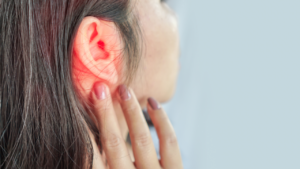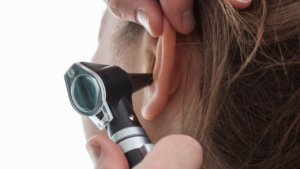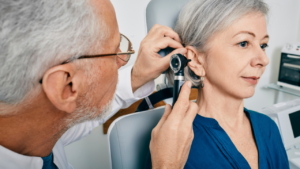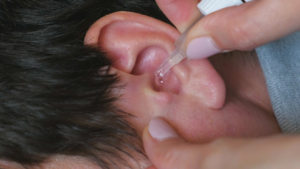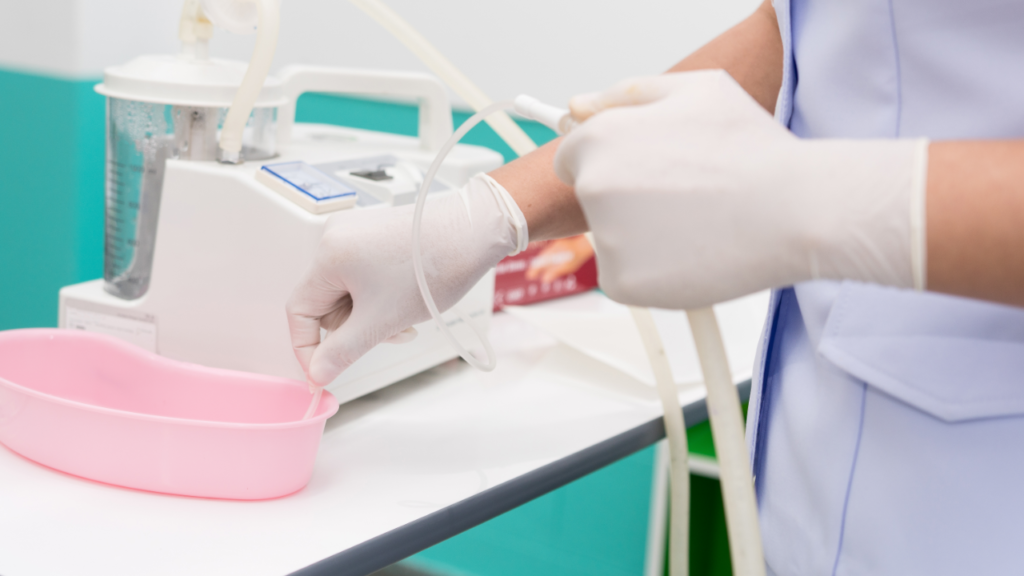
Have you ever wondered how long it takes for your ears to feel normal again after undergoing microsuction for ear wax removal? In this article, we will explore the immediate relief and potential side effects that may arise post-procedure. We will also discuss the do’s and don’ts to follow after microsuction, as well as tips on how to speed up the recovery process. We will highlight when it’s necessary to seek medical attention if you experience any concerning symptoms. Let’s dive in!
Key Takeaways:
- It takes 24 hours for ears to settle after microsuction, with immediate relief being felt after the procedure.
- Mild discomfort, dizziness, temporary changes in hearing, slight bleeding or bruising are common after microsuction.
- To speed up the recovery process, keep the ears clean, avoid water contact, use ear drops and follow up with your doctor. Seek medical attention if you experience severe pain, prolonged dizziness or hearing loss, or excessive bleeding or infection.
What Is Microsuction?
Microsuction is a non-invasive procedure used to remove earwax build-up from the ear canal.
During microsuction, a specially trained healthcare professional utilises a microscope and a small suction device to gently extract troublesome earwax. This method is incredibly precise, allowing for targeted removal without causing any damage to the delicate ear structures. The benefits of this treatment include improved hearing, relief from discomfort or pain caused by excessive earwax, and reduced risk of ear infections. As compared to traditional ear syringing, microsuction is considered safer and more effective due to its controlled and gentle approach.
Why Is Microsuction Used For Ear Wax Removal?
Microsuction is commonly used for ear wax removal due to its effectiveness and safety when performed by a trained healthcare practitioner.
Unlike traditional methods like ear syringing, microsuction doesn’t involve water, making it safer for individuals with eardrum issues or a history of ear surgeries. Since microsuction is a gentle and precise procedure, there is minimal risk of damage to the ear canal or pushing the wax deeper. Healthcare practitioners opt for microsuction as it provides better visibility and control, allowing them to remove earwax build-up effectively. With success rates as high as 95%, patients often experience immediate relief and improved hearing post-procedure.
How Long Does It Take For Ears To Settle After Microsuction?
After microsuction, the time it takes for ears to settle varies based on individual symptoms and the extent of earwax removal.
Common symptoms following microsuction may include temporary discomfort, mild dizziness, or slight drainage from the ear canal due to the sudden change in pressure and removal of built-up earwax.
- Gradual improvement in ear comfort typically occurs within a few days as the delicate ear structures readjust and any residual irritation subsides.
- Factors influencing the duration of settling include the amount of earwax removed, existing ear conditions, and personal healing ability.
It is crucial to follow post-procedure care instructions provided by the healthcare professional to support a smooth recovery process.
Immediate Relief
Immediate relief is often experienced post-microsuction as the earwax causing discomfort is removed swiftly.
This quick and efficient removal of excess earwax not only provides relief from any bothersome symptoms like earaches, itching, or the sensation of fullness in the ear but also aids in restoring normal ear function.
The removal of the blockage enables sound waves to travel freely through the ear canal, improving hearing and reducing any muffled sounds that may have been experienced due to the compacted earwax. This restoration of auditory clarity can be truly transformative, offering a renewed sense of comfort and overall well-being to individuals who undergo the microsuction procedure.
Mild Discomfort or Dizziness
Mild discomfort or dizziness may occur temporarily after microsuction, which could be due to adjustments in hearing or changes in ear pressure.
One of the common potential side effects of microsuction procedures is temporary hearing loss immediately following the process. This typically happens due to the removal of wax, which can disrupt the normal hearing process for a short period.
Dizziness is another somewhat common issue that some patients might experience post-microsuction. This sensation can be related to the sudden changes in pressure within the ear canal during the suction process. There may also be instances of vertigo as the body adjusts to the altered environment within the ear. It is crucial for individuals undergoing microsuction to be aware of these possible side effects and to consult with their healthcare provider if these symptoms persist or worsen.
Temporary Changes in Hearing
Temporary changes in hearing are common after microsuction as the ear adjusts to the removal of excess earwax build-up.
During the process of microsuction, the carefully controlled suction removes accumulated earwax that may have been blocking the ear canal, affecting sound conduction. After the procedure, individuals may experience differences in hearing sensitivity, clarity, or even slight imbalance as the ear readjusts.
Hearing gradually returns to normal as the ear’s natural mechanisms kick in, regulating pressure and moisture levels. It is crucial to allow the ear some time to adapt fully to these changes, aiding the restoration of clear hearing abilities.
Slight Bleeding or Bruising
In some cases, slight bleeding or bruising may occur following microsuction, but strict hygiene practices reduce the risk of infection in the ear canal.
It’s not uncommon for minimal bleeding or bruising to be experienced after undergoing microsuction, which is a safe and effective procedure for removing earwax build-up. To ensure optimal healing and prevent infection in the delicate ear canal, maintaining good hygiene practices is crucial.
Ear canal infections can be avoided by keeping the area clean and dry. If bleeding occurs, it is typically minor and should resolve on its own. Gentle pressure with a clean cloth can help control any bleeding, and avoiding inserting anything into the ear can aid in preventing further irritation.
What Are The Do’s And Don’ts After Microsuction?
After microsuction, it is crucial to follow specific do’s and don’ts to ensure proper care of the ears and prevent wax build-up.
- Do: Use prescribed ear drops as advised by the audiologist to keep the ear canal moisturised and aid in wax removal.
- Do: Clean the outer ear with a damp cloth, gently removing any visible wax without inserting anything into the ear canal.
- Don’t: Insert cotton buds, hair grips, or any objects into the ear as it may push wax deeper or cause injury.
- Don’t: Expose the ears to excessive water or moisture, especially when swimming or taking showers, to prevent softening and build-up of wax.
Do’s
Using olive oil or almond oil drops in the ear canal as per their healthcare provider’s advice is a recommended practice post-microsuction.
After microsuction, applying olive oil or almond oil drops can help in soothing and moisturising the ear canal lining, reducing irritation and dryness. These oils act as natural lubricants, aiding in the prevention of earwax build-up and promoting a healthy ear environment. When used correctly and in moderation, olive oil or almond oil can gently soften any residual wax in the ear canal, making it easier for the body to naturally expel it. It is crucial to consult a healthcare professional to ensure the proper dosage and application method to reap the full benefits of these oils for ear health.
Don’ts
Avoid using cotton wool buds or inserting objects into the ear post-microsuction to prevent the risk of infection or ear canal damage.
After microsuction, it is crucial to steer clear of using cotton wool buds or introducing any objects into the ear canal. These actions can disturb the delicate environment of the ear, potentially leading to irritation or even infection. Cotton wool buds, despite their common use, can inadvertently push earwax deeper into the ear canal, causing a blockage or damaging the eardrum. Inserting any foreign objects into the ear can increase the risk of acquiring an ear infection or causing injury. It is essential to allow the ears to naturally regulate themselves post-microsuction without interference.
How To Speed Up The Recovery Process?
To expedite the recovery process after microsuction, it is recommended to avoid water contact in the ears for a specified period.
This is crucial to facilitate proper healing and reduce the risk of infection. When water enters the ears post-procedure, it can disrupt the delicate healing tissues and lead to potential complications.
To achieve optimal results, it is advisable to steer clear of swimming, showering without ear protection, or any activities that may expose the ears to moisture. Keeping the ears dry allows the ear canal to heal effectively and minimises the chances of discomfort or setbacks.
Keep The Ears Clean
Maintaining proper ear hygiene by keeping the ears clean post-microsuction is essential for a smooth recovery process.
After a microsuction procedure, the ear canal is particularly sensitive and vulnerable to infections, making it crucial to ensure cleanliness to promote healing. Proper post-microsuction care involves gentle cleaning practices, such as using a damp cloth to wipe the outer ear area and avoiding inserting any objects into the ear canal. It is advisable to seek advice from a healthcare professional on suitable ear drops or solutions for maintaining ear hygiene. Developing a routine for regular ear care can aid in preventing the build-up of wax and reduce the need for frequent microsuction procedures.
Avoid Water Contact
Avoiding water contact in the ear canal and refraining from swimming or using water-based ear drops can aid in expediting the recovery post-microsuction.
Exposure to water in the ear canal can interfere with the healing process post-microsuction. It is vital to keep the ear dry to prevent any potential infections or complications from arising. By steaming clear of swimming and avoiding the use of water-based ear drops, you provide the optimal environment for the ear canal to heal efficiently.
Use Ear Drops
Applying prescribed ear drops, including olive oil solutions, can help maintain ear health and aid in the post-microsuction recovery phase.
These specialised ear drops play a crucial role in hydrating and lubricating the ear canal, which can prevent the build-up of earwax and soothe any discomfort caused by the microsuction process. Olive oil, known for its natural anti-inflammatory properties, can ease irritation and promote healing within the ears. Using olive oil-based ear drops can also help soften hardened earwax, making it easier to remove during routine ear cleaning procedures. This gentle solution is often recommended by healthcare professionals for its effectiveness in maintaining optimal ear health and providing relief after ear procedures.
Follow Up With Your Doctor
It is essential to schedule a follow-up appointment with your healthcare practitioner after microsuction to ensure proper care and address any concerns regarding infection or discomfort.
Regular check-ups post-microsuction serve as crucial touchpoints to monitor the healing process, evaluate any lingering issues in the ear canal, and receive guidance on optimal care practices. Through these follow-up appointments, your practitioner can assess the effectiveness of the treatment, provide further advice on infection prevention, and ensure any residual problems are promptly addressed to promote long-term ear health. These sessions also offer you the opportunity to discuss any ongoing discomfort or seek clarification on care instructions, fostering a comprehensive approach to your ear wellness journey.
When should you be concerned after microsuction?
After microsuction, if you experience severe pain or signs of infection such as discharge, it is crucial to seek immediate medical attention.
Severe pain following a microsuction procedure could indicate complications that require urgent assessment. Plus pain, other warning signs like persistent discharge or unusual smells from the ear should not be ignored. These symptoms may suggest an underlying infection that could worsen if left untreated. Seeking prompt medical intervention can help prevent potential complications such as an ear infection that may lead to further discomfort or hearing issues. Any unusual or concerning symptoms post-microsuction should be taken seriously to ensure proper care and recovery.
Severe Pain or Discomfort
Persistent severe pain or discomfort following microsuction may indicate complications such as incomplete wax removal and should be promptly addressed by a healthcare practitioner.
Persistent severe pain post-microsuction can signal underlying issues from inadequately cleared earwax or other factors and must not be ignored or self-treated. It is crucial to understand that the discomfort could be due to remnants of wax left behind or potentially an injury during the procedure. Seeking assistance from a qualified healthcare practitioner is essential to identify the root cause of the pain and receive appropriate care for a successful resolution.
Prolonged Dizziness or Hearing Loss
If giddiness or hearing loss persists for an extended period after microsuction, it may be indicative of underlying issues such as inner ear disturbances or infections.
These symptoms often suggest potential complications that may have been triggered or exacerbated during the microsuction procedure.
Inner ear disturbances can result from the suction process affecting delicate structures responsible for balance and hearing. Unresolved infections in the ear can cause ongoing issues with hearing loss and manifest as vertigo or tinnitus. It is crucial to seek prompt medical evaluation if these symptoms endure, as early intervention can mitigate further complications and facilitate appropriate treatment.
Excessive Bleeding or Infection
Excessive bleeding or signs of infection post-microsuction, such as swelling or discharge, necessitate immediate contact with your healthcare provider or relevant medical services.
Microsuction is a delicate procedure commonly used to treat conditions like otitis externa, where earwax is removed using gentle suction. While the process is generally safe, any unexpected bleeding or infection can signal a potential complication. In such cases, it’s crucial to seek guidance promptly.



